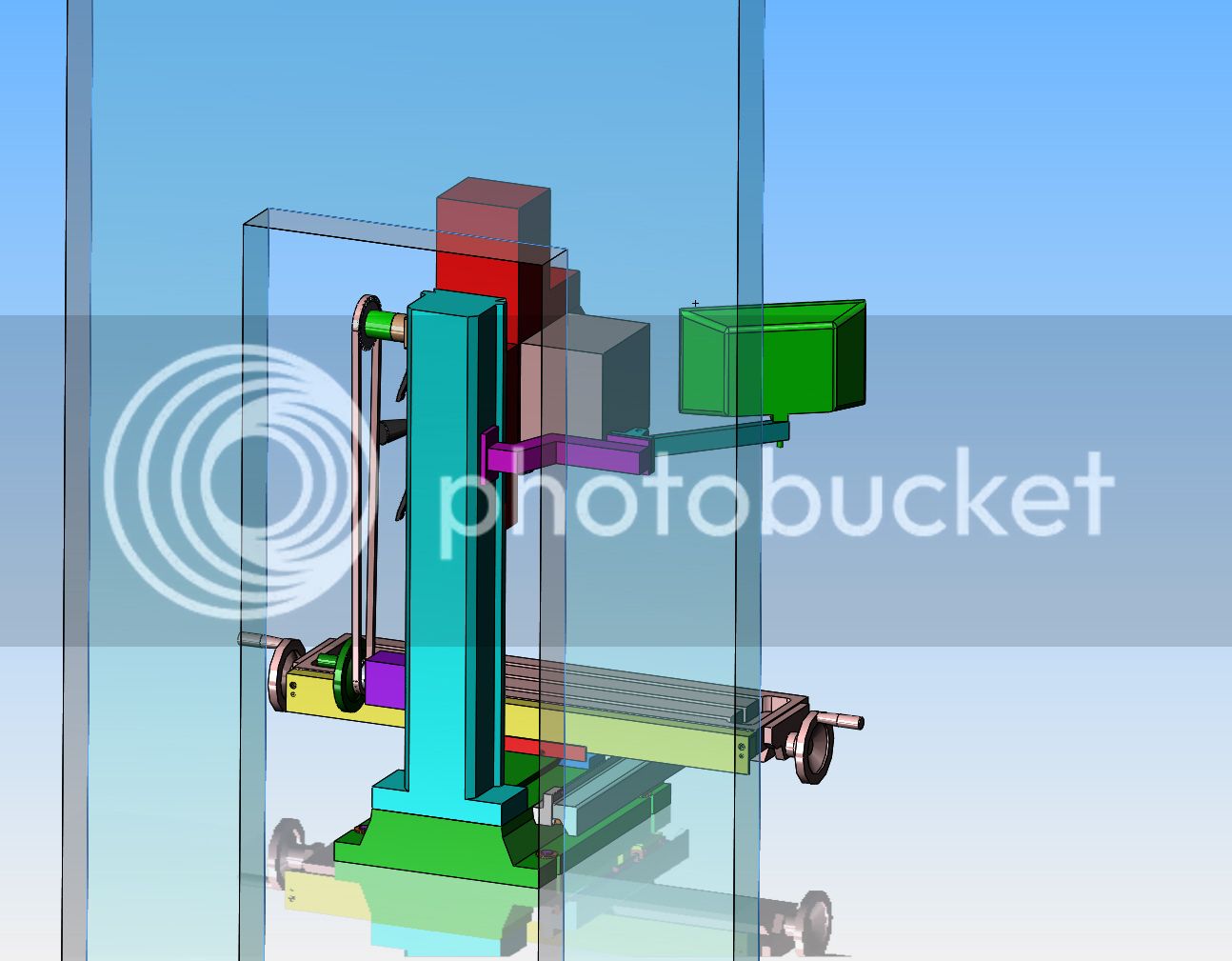You are using an out of date browser. It may not display this or other websites correctly.
You should upgrade or use an alternative browser.
You should upgrade or use an alternative browser.
CX601 Milling Machine
- Thread starter Brian Rupnow
- Start date

Help Support Home Model Engine Machinist Forum:
This site may earn a commission from merchant affiliate
links, including eBay, Amazon, and others.
This mornings "Quiet time" was spent modeling the lowered head lifting handle. This is a very simple modification, using #35 pitch roller chain and an 18 tooth and 28 tooth roller chain sprockets, along with a couple of home made pieces. I have an old injury to my right shoulder that doesn't like it very much when I reach up high to turn the handle that lifts and lowers the head. This modification brings the handle down to a much easier reach, and even gives some mechanical advantage when turning the handle. if anyone wants I can give more detailed information on this mod.---Brian
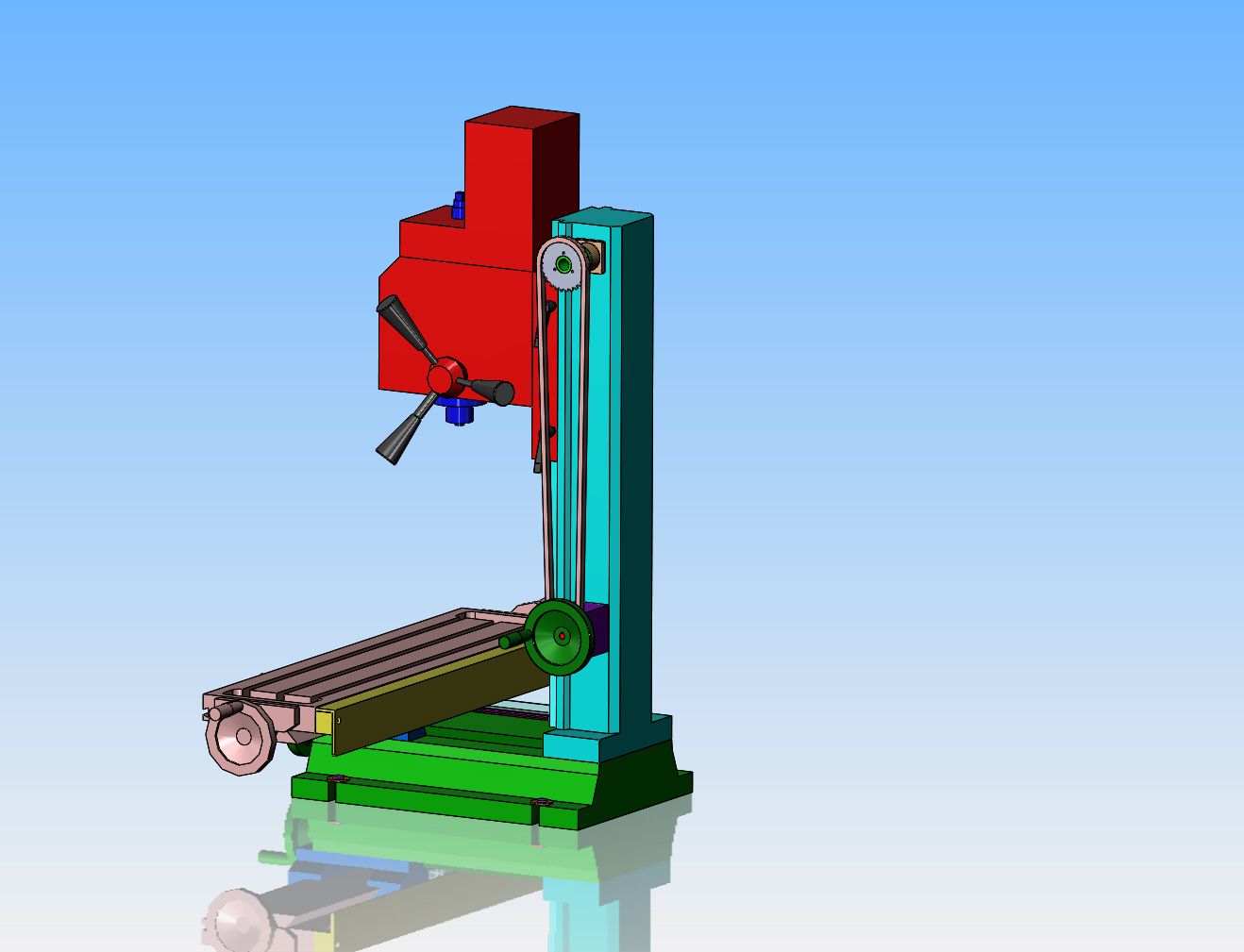

- Joined
- Aug 7, 2014
- Messages
- 57
- Reaction score
- 68
Hi Brian,
I have the same mill as yours (called an AMA 30LV here) and fitted a DRO similar to yours last year. The DRO does take up quite a bit of rearward table travel, which was not too great before the DRO was fitted. This requires the work being carefully positioned towards the back of the table so the front areas can be accessed. It's more than once I have had to re-indicate work due to the table not moving rearwards as much and large pieces will be awkward.
I do like the modification of the pulley system though. I am like you, having to reach up high each time to raise the head is a pain. If you have a drawing of your system it would be appreciated and having a mechanical advantage is a great idea as the head gets heavy and stretching to get to the wheel is tiring.
Looking at yours, I put the DRO box support arm where the pulley chain runs but this can be adjusted. The picture was taken prior to the DRO being fitted.
I have had a slight problem with the slow speeds hunting, this seems to manifest itself during cold weather (mine is in the garage) and the wiring diagram in the manual is not accurate, I wonder if yours is better illustrated?
All the best, Steve.

I have the same mill as yours (called an AMA 30LV here) and fitted a DRO similar to yours last year. The DRO does take up quite a bit of rearward table travel, which was not too great before the DRO was fitted. This requires the work being carefully positioned towards the back of the table so the front areas can be accessed. It's more than once I have had to re-indicate work due to the table not moving rearwards as much and large pieces will be awkward.
I do like the modification of the pulley system though. I am like you, having to reach up high each time to raise the head is a pain. If you have a drawing of your system it would be appreciated and having a mechanical advantage is a great idea as the head gets heavy and stretching to get to the wheel is tiring.
Looking at yours, I put the DRO box support arm where the pulley chain runs but this can be adjusted. The picture was taken prior to the DRO being fitted.
I have had a slight problem with the slow speeds hunting, this seems to manifest itself during cold weather (mine is in the garage) and the wiring diagram in the manual is not accurate, I wonder if yours is better illustrated?
All the best, Steve.

Over a lifetime, I have had too many holes move while being drilled to do this without a drilling fixture. the "fixture" is simply a piece of 3 1/2" x 3/8" cold rolled flatbar, with two 1/4" diameter pins inserted in the bottom to "straddle" the dovetail below it with zero clearance and the two holes I want to drill in the back side of the saddle pre-drilled in the bar on the mill. Two toe-clamps on the mill table hold it securely in place. The right angle drill attachment is something I bought 6 years ago for a different purpose and have never used.---it worked out very well for this. The holes are now drilled and tapped with no misplaced holes or broken tap disasters. The reading head is mounted in place and the table is drilled and tapped to hold the scale in place. I am going to put some travel limiters on the 23 1/2" X axis table movement, because at full travel it gets alarmingly close to the full travel of the scale. the next size larger scale would have been longer than my mill table.
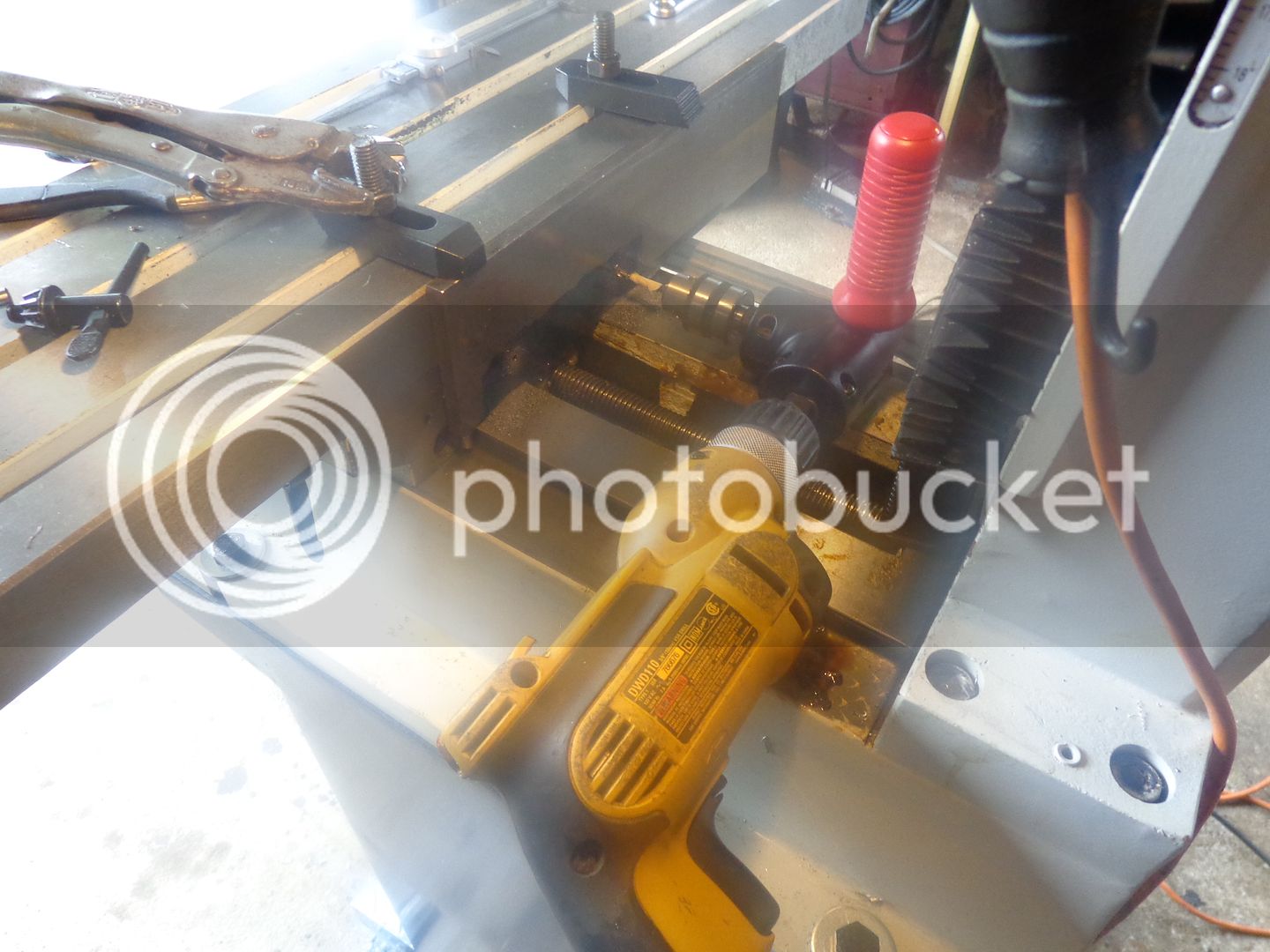
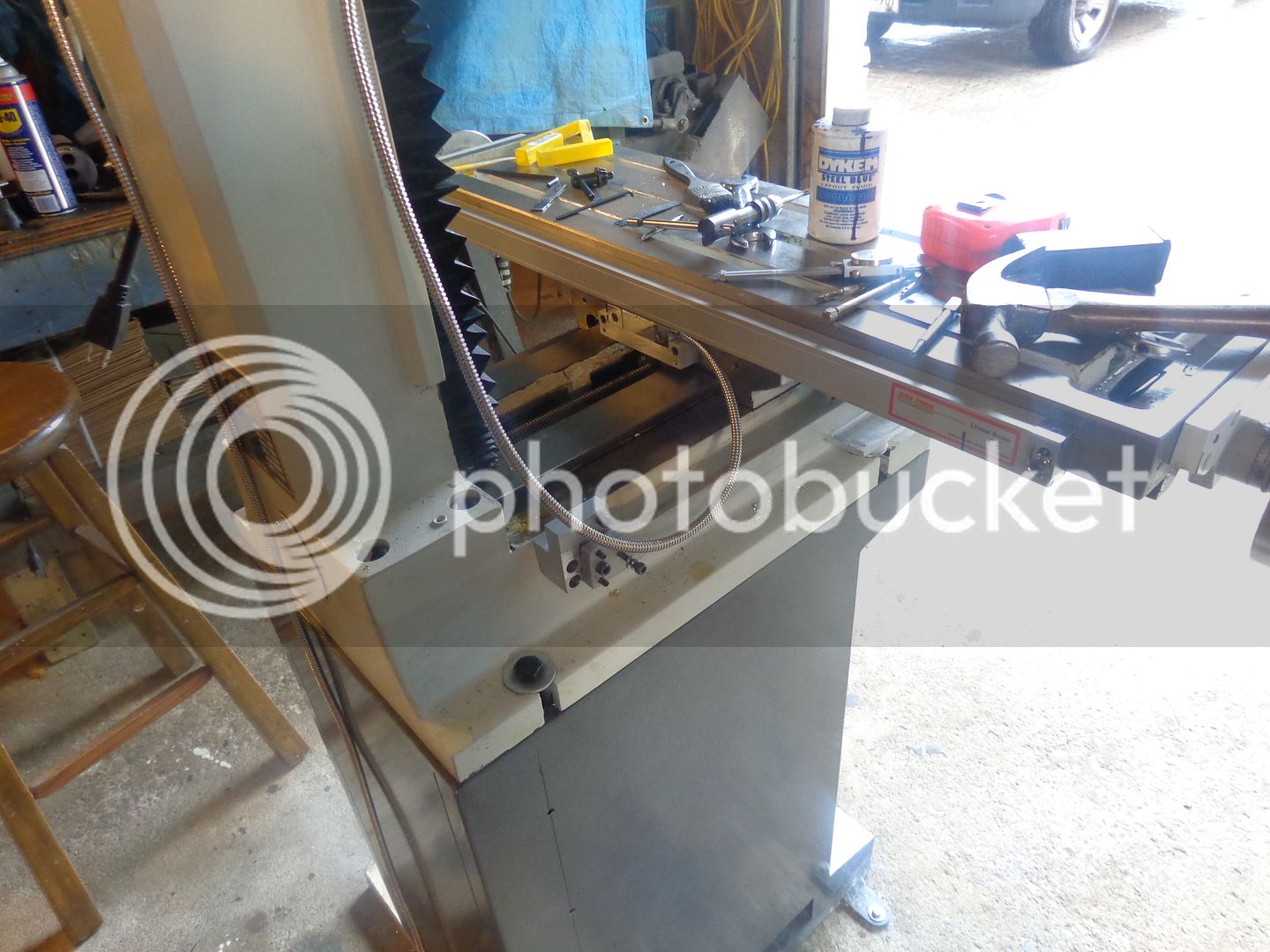




- Joined
- Jun 24, 2010
- Messages
- 2,472
- Reaction score
- 991
This modification brings the handle down to a much easier reach, and even gives some mechanical advantage when turning the handle. if anyone wants I can give more detailed information on this mod.---Brian
http://s307.photobucket.com/user/Br...CATED HD. LIFTING HANDLE_zps2pebmr7h.jpg.html
That's a great idea. Yes snap some pics when the time comes. The turn handle is in an odd spot. I've seen a very similar looking Asian mill (I think) with the handle down low. Strange why they would put it there.
My mill is an RF-45, suspect bit bigger machine & also heavier head. The handle is better positioned mid column, but still requires reaching in and sailor arms. I've mulled over adding gas struts like the cnc-conversion guys do, but that's a bit of a production. A motorized gear reduction is another option I suppose, but I recall figuring pretty hefty torque. But your chain reduction/relocation idea seems to be a good compromise & positioned completely independent of the existing handle location.
Mkila--Yes, I will post drawings of the modification, when I get to it. As far as the wiring diagram is concerned, there is one stuck to the side of the readout box on my mill, but I'm not really an electrical kind of guy, so I have no idea whether it is correct or not.---Brian

$45.99
Sunnytech Mini Hot Air Stirling Engine Motor Model Educational Toy Kits Electricity HA001
stirlingtechonline

$26.89
$34.99
Peachtree Woodworking Supply Bowl Sander Tool Kit w/Dual Bearing Head & Hardwood Handle, 42 Pieces Wood Sander Set, 2 Hook & Loop Sanding Disc Sandpaper Assortment, 1/4 Mandrel Bowl Sander
Peachtree Woodworking Supply Inc

$37.38
$49.99
Becker CAD 12 3D - professional CAD software for 2D + 3D design and modelling - for 3 PCs - 100% compatible with AutoCAD
momox Shop

$599.00
$649.00
FoxAlien Masuter Pro CNC Router Machine, Upgraded 3-Axis Engraving All-Metal Milling Machine for Wood Acrylic MDF Nylon Carving Cutting
FoxAlien Official

$49.95
$55.99
DjuiinoStar Hot Air Stirling Engine Assembly Kit: Spend 30 Minutes to Build Your Own Stirling Engine
djuiinostar

$99.99
AHS Outdoor Wood Boiler Yearly Maintenance Kit with Water Treatment - ProTech 300 & Test Kit
Alternative Heating & Supplies

$19.15
$29.95
Competition Engine Building: Advanced Engine Design and Assembly Techniques (Pro Series)
MBC Inc.
![DreamPlan Home Design and Landscaping Software Free for Windows [PC Download]](https://m.media-amazon.com/images/I/51kvZH2dVLL._SL500_.jpg)
$0.00
DreamPlan Home Design and Landscaping Software Free for Windows [PC Download]
Amazon.com Services LLC
- Joined
- Jun 24, 2010
- Messages
- 2,472
- Reaction score
- 991
That was me & thanks. I like it.
Dumb question but is the mounting bracket A mirrored on the back? Or is the slider bar kind of cantilevered towards the rear?

Dumb question but is the mounting bracket A mirrored on the back? Or is the slider bar kind of cantilevered towards the rear?

There is a bracket supporting the far end of the rod that comes up off the mill base. The rod sets stationary. The slider bolted to the saddle moves back and forth. The locks with the knurled handles slide in or out and lock on the round bar to restrict linear travel of the slider.
Here we go, as requested. This will get the head height adjusting handwheel down out of the sky, to a more comfortable height, and give you some mechanical advantage as well. A word of warning though---There is no provision for tensioning the chain, so pick the approximate position you want the lowered handwheel to be in, then form a length of chain complete with master link and "hang" the lower assembly from the top sprocket. This will give an exact location to drill and tap your mill column so that the chain will be neither too tight nor too loose.
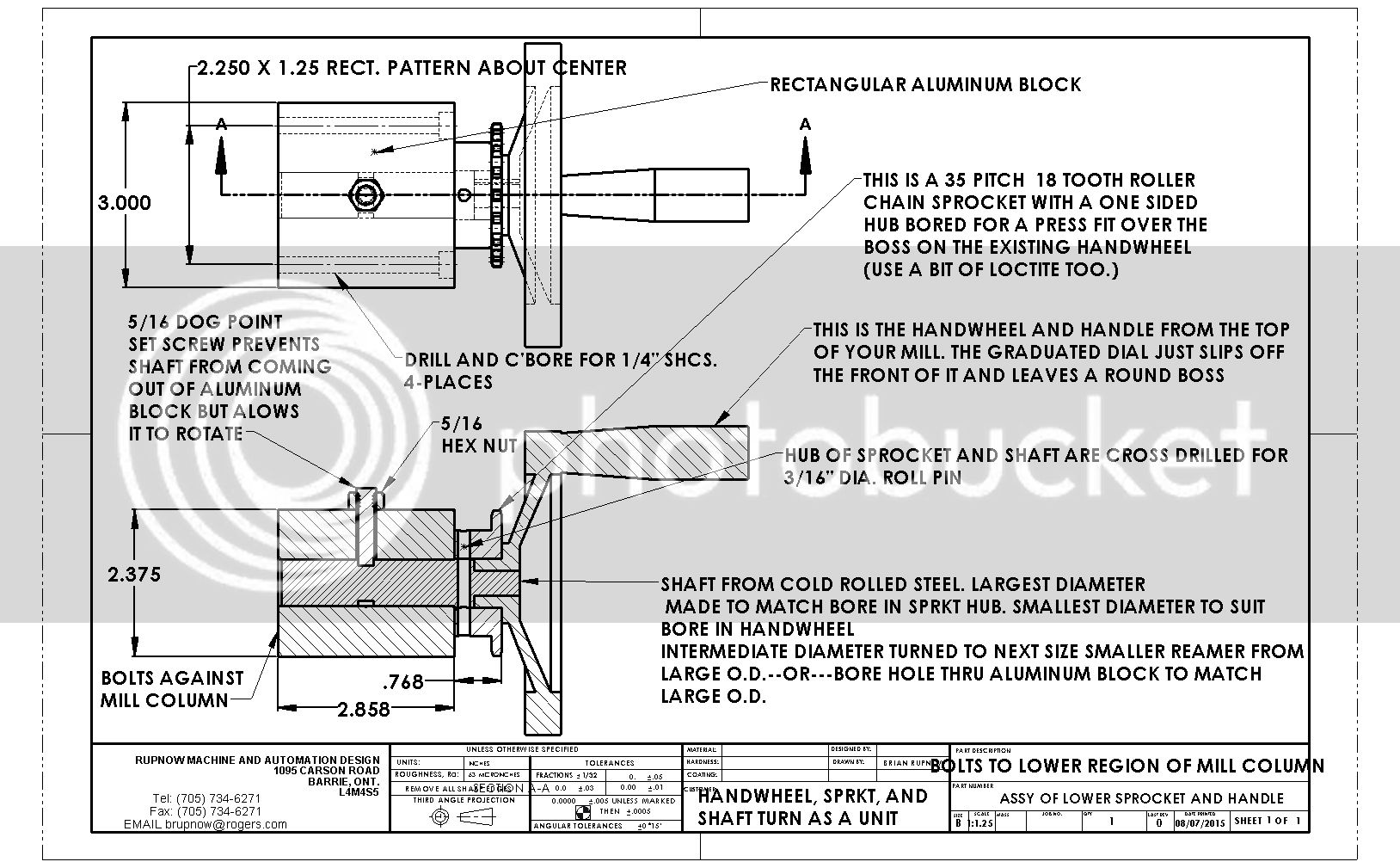
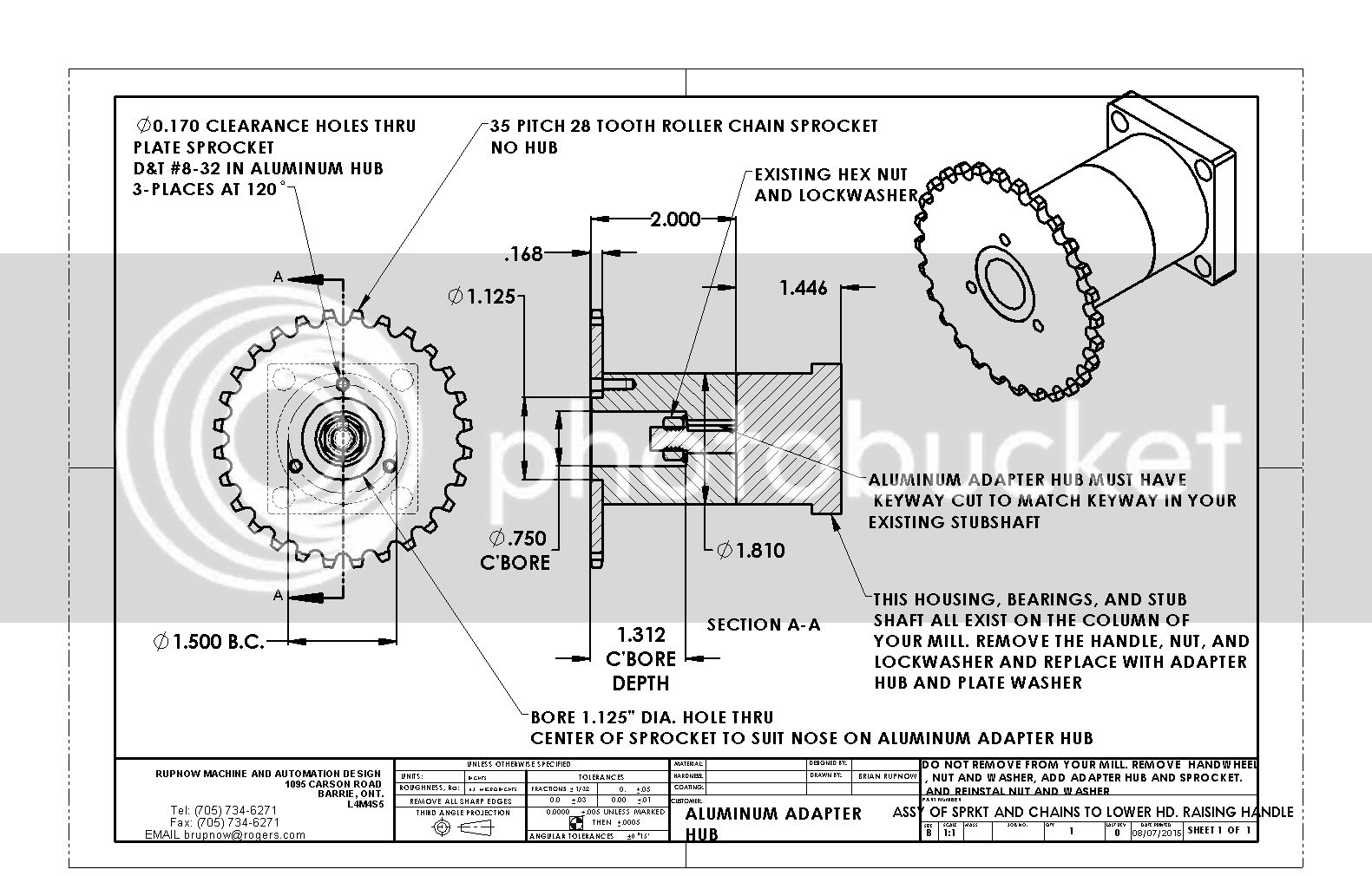


The electronic display and support are installed. If it bounces around because of being installed on the sheet metal motor guard, I will relocate the support bracket to the column. I purchased a piece of 3" x 3" x 1/8" aluminum angle and used it to make a cover for the X axis scale. Since I don't have the capability here to weld aluminum, I made up two end plate/mounting brackets from 1`aluminum plate and bolted them in place. The top of the aluminum guard angle is about 0.100` below the top of the mill table.The only fabrication I have left to do is to make up two table stop brackets to limit the travel of my X axis to 23so as not to damage the scale by òvertravelling`the reading head.
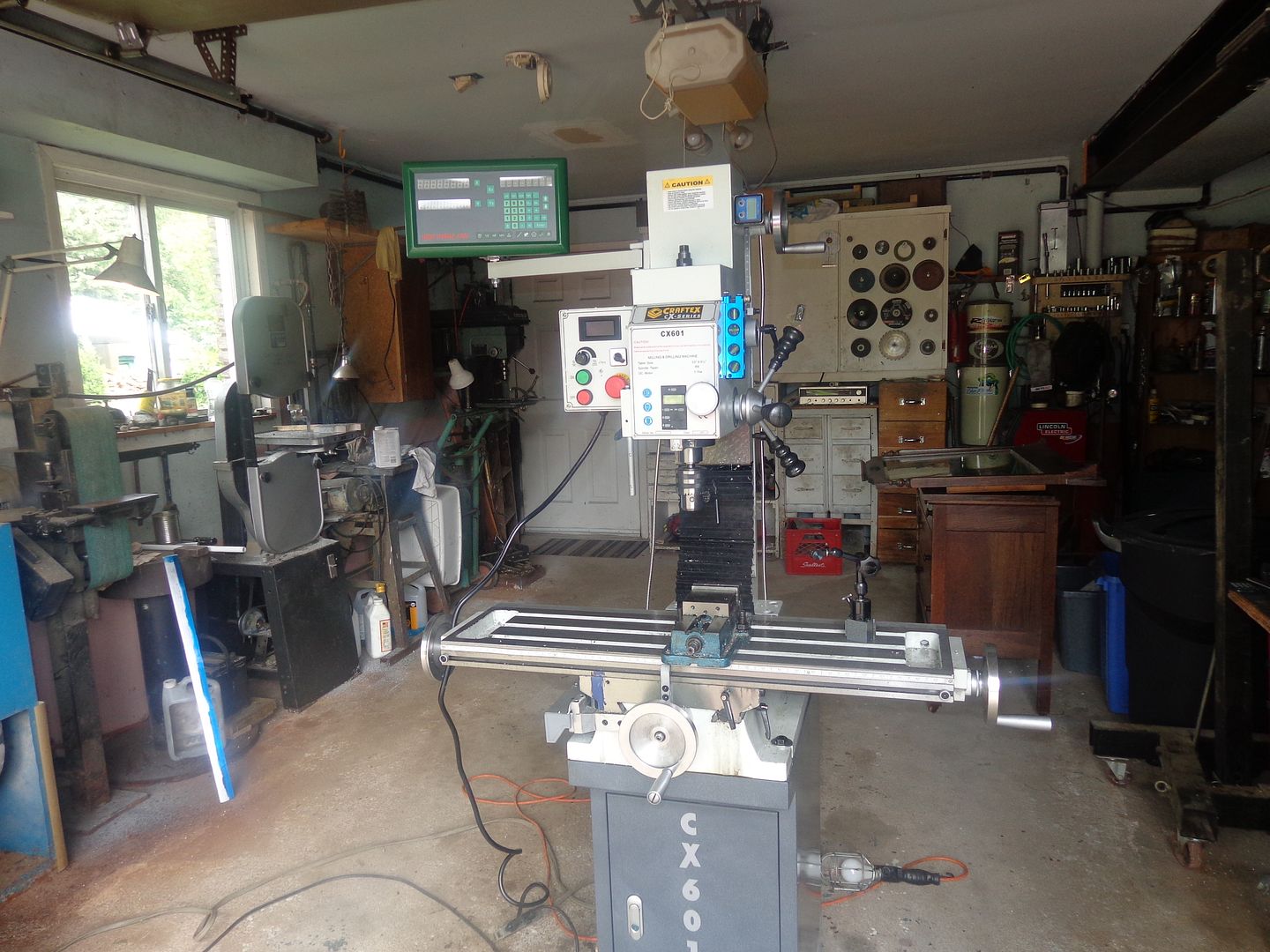





Last edited:
I think you are going to want the readout mounted on the column and down close to the table. You will be watching the readout and the work at the same time and getting the readout down close to the work will help. I drilled and tapped a couple bolts into the column about mid way between the table and the head.
Swifty
Well-Known Member
I agree, I think that you have mounted it too high.
You fellows may well be right. I stuck it up there because it was easy and it has to go somewhere. I won't really know until it comes to life and I try using it.
IT'S ALIIIIIVVVE!!!! I just plugged in the wiring from the X axis scale and the 110 volt feed to the read-out box. Holy Cow---is it ever neat to turn the dials/handles on the table and see those numbers spiral up or down. Ron, you're absolutely right---it's way too high where it is currently mounted. Of course now I'm going to have to build yet another bracket to hang off the side of the column so I can see the DRO readout around the mill control box. I haven't permanently mounted the Y axis scale yet, I've been too busy working on the X axis guard.---I've got two emails from customers insisting that I work on their projects RIGHT NOW, so it will probably be Sunday before I get the X axis travel limiters built and installed and suss out a bracket to mount the DRO box in a better spot.---Brian
Swifty
Well-Known Member
Great work Brian, I will be doing my lathe later this year, I'm really looking forward to it. I just went out and checked my mill readout, the display is at eye level, it's a convenient height to zero readings etc without having to lift my arm too high, but it's out of the way of swarf. I never look at my machine dials anymore, you will wonder how you ever got on without it.
Paul.
Paul.
I worked on a design job today until 1:30, but got hung up on a question my customer who is currently away in Europe couldn't answer.----so---I made up my X axis table travel limiters. My glass scale is only good for 23 5/8" (600 mm) and my table travel is 23 1/2". If you overtravel the scale capabilities, then it breaks something inside the scale. I didn't want to take a chance on that happening, so I made up a travel limiter for each end of the x axis which bolt to tapped holes in the end of the table. The 1/2" diameter rod welded to the inside of the stop bracket stops against the end of the saddle as shown in the pictures. This reduces my overall table travel to 21 1/2", but I can't imagine ever needing that much travel, and I certainly didn't want to break the scale.---I'm almost there!!! I need to make up a bracket to correctly position the electronic readout box and I will be just about finished with the DRO installation. This type of mill comes with a sheet of flexible rubber that runs from the base of the column to a bracket on the saddle to prevent chips from clogging up the Acme screw which operates the Y axis.--I now have nowhere to attach this sheet at the saddle end, so I'm a bit perplexed as to what to do about that. I know you can buy collapsible covers for this screw, same as you can for a lathe lead screw, but they are horribly expensive and I don't want to get into installing anything more right now.
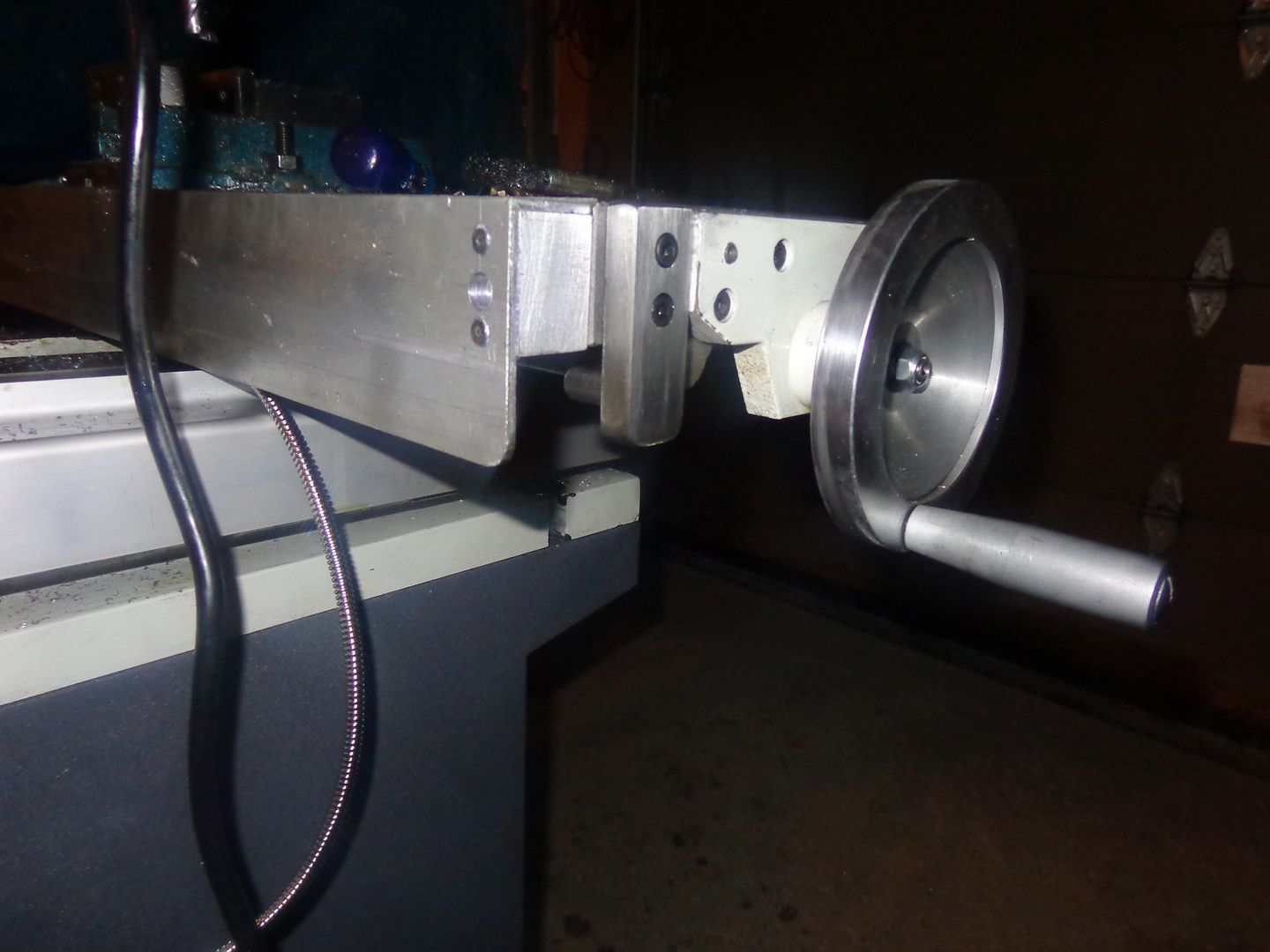
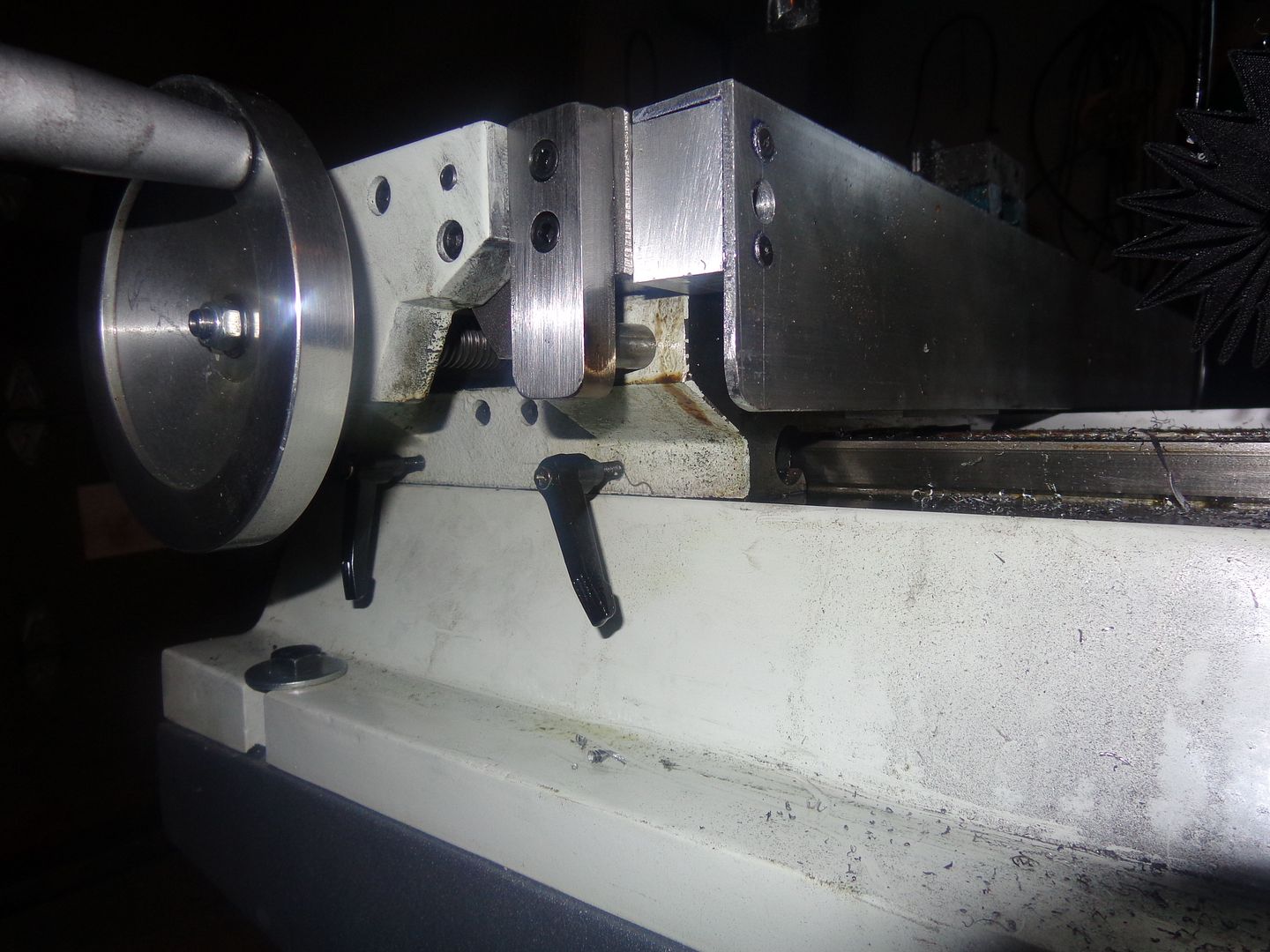


I keep on making the "last bracket" and then discovering I need one more---. This afternoon I welded up a "dogleg" bracket to mount the DRO display off the column.--This was no simple task, because the milling machine control box sets exactly in the position where I would like the DRO readout to set, and it travels up and down as I raise or lower the head of the mill, plus the fact that the mill will eventually set in a recess in the wall of my machine shop. I finished the dogleg bracket and painted it, and then I got to seriously studying how the heck I am going to re-attach the big rubber flap that protects the Y axis Acme screw. Okay---I have a plan--but it is going to require yet another bracket. And it involves an "edge sealing brush" which will ride against the aluminum X axis guard as the table moves left to right and back, to prevent swarf from getting down into the X axis reading head. I'm getting darn well tired of making brackets!!!!
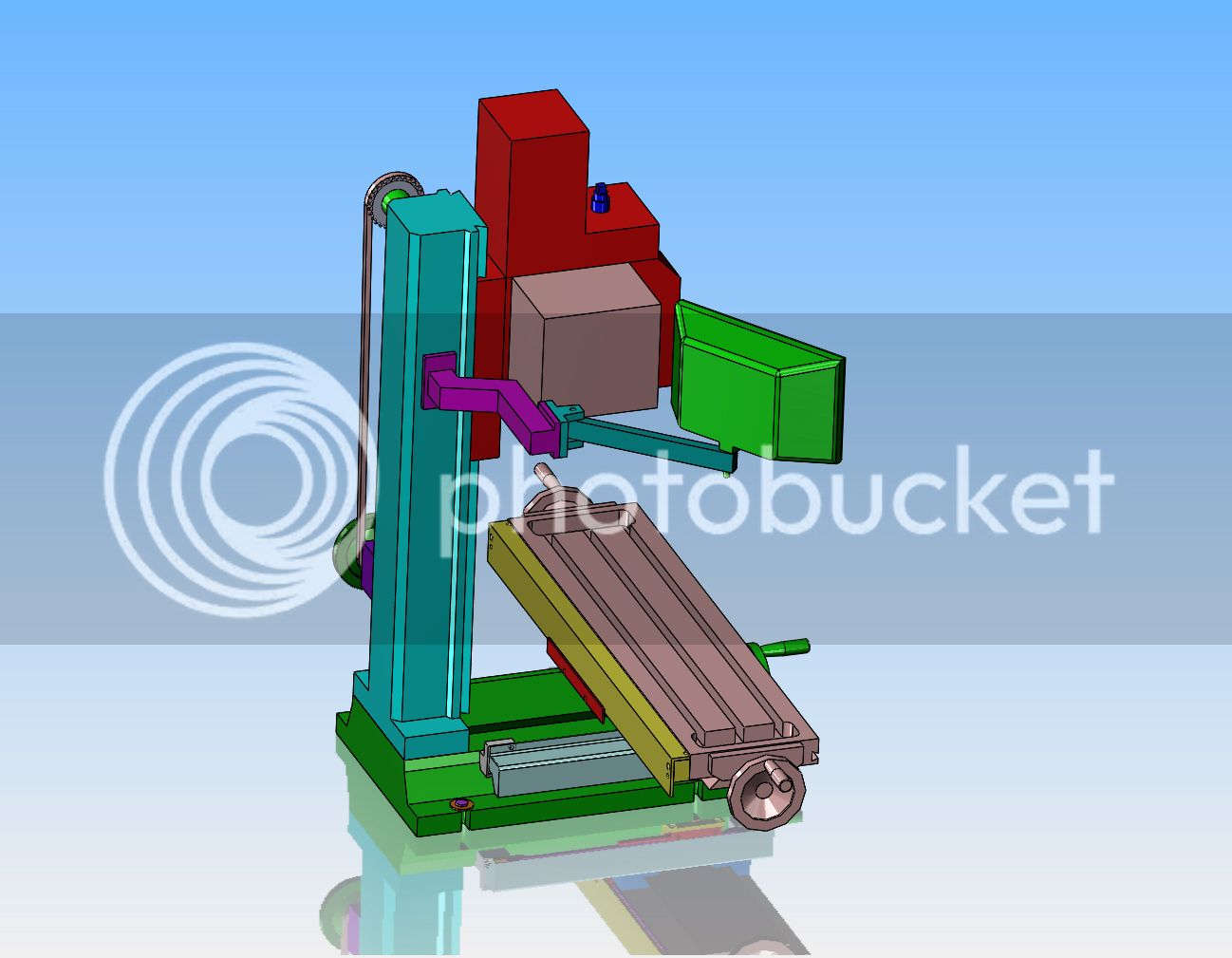

I dont think the dog-leg bracket is needed. I simply used the bracket that came with the DRO and mounted it right to the side of the mill column, about half way up the column. Just drill 4 holes and tap them, I used 1/4-20.
Similar threads
- Replies
- 8
- Views
- 1K




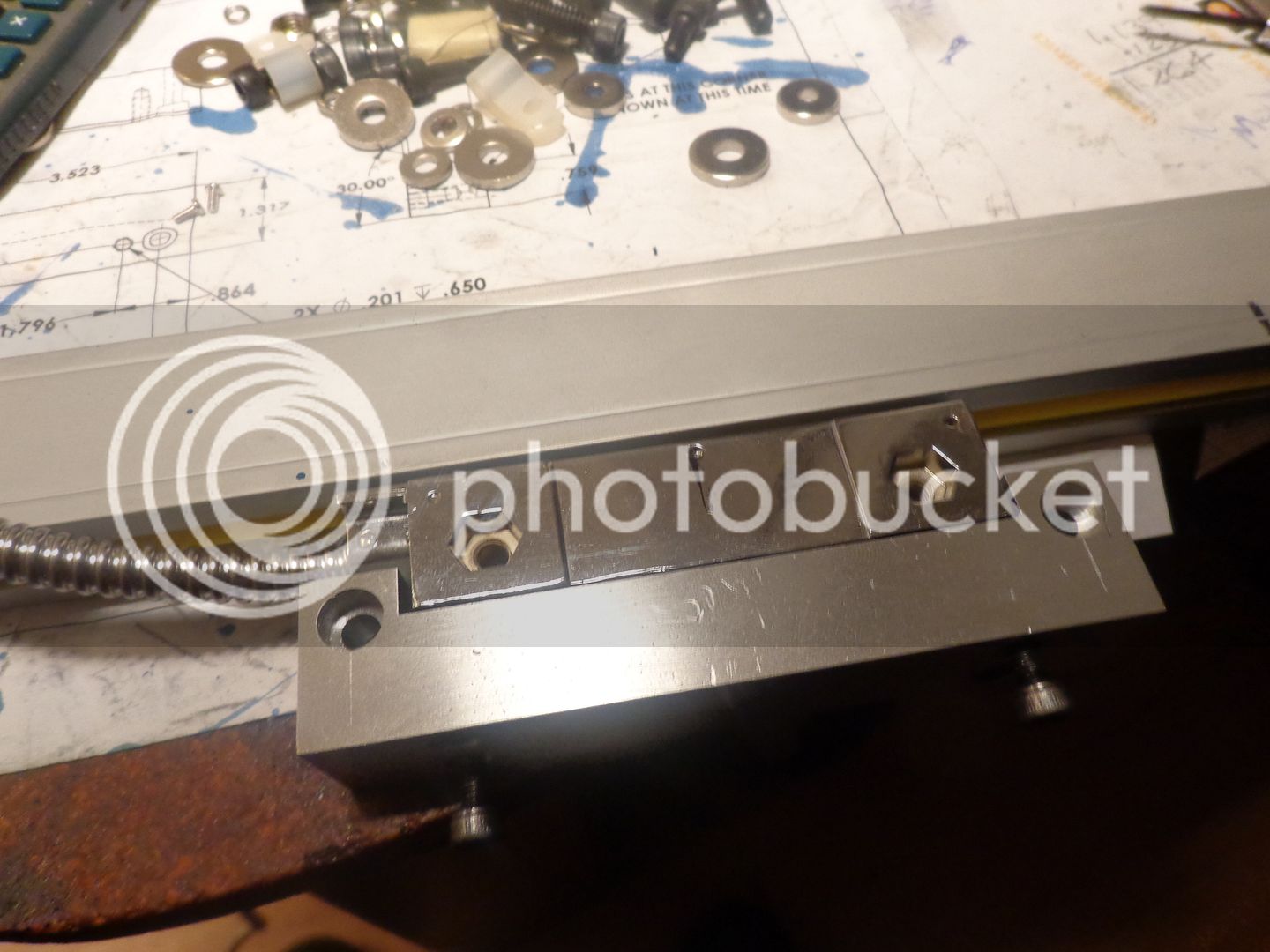























![MeshMagic 3D Free 3D Modeling Software [Download]](https://m.media-amazon.com/images/I/B1U+p8ewjGS._SL500_.png)


























